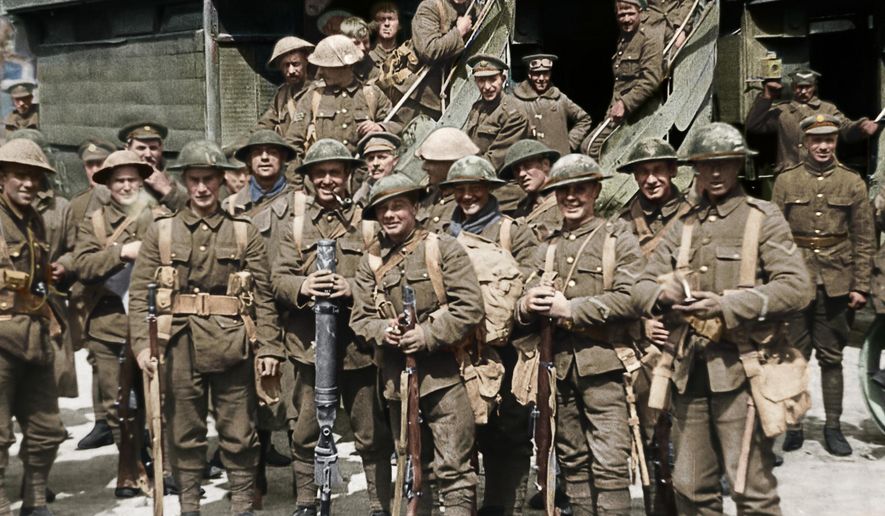Director Peter Jackson is upfront about what audiences should not expect from his unconventional World War I documentary, “They Shall Not Grow Old.” This is a film made by a non-historian for an audience of non-historians, he says. There are no dates, names or locations. Neither are there any talking heads or historians or politics. It’s just images and the voices of those who were there, telling their own stories.
And the result is riveting - an immersive, haunting and often transcendent experience that’s unlike anything you’ve ever seen before. That’s because Jackson has done something revolutionary by restoring, colorizing and adding 3D depth to hundred-year-old footage from the archives of the Imperial War Museum, depicting everything from basic training to the trenches.
Although there are many smiles as the men as young as 15 and 16 look upon the camera that’s filming them, it does not spare you the harrowing stuff. You watch as soldiers strip off their shoes and socks to reveal gangrene. You see dead bodies piled on top of one another, a hand sticking out of the mud, bare-bottomed soldiers trying to relieve themselves in a makeshift, and quite public, toilet. The mechanics of a cannon are downright hypnotic. The 3D effects make you feel as though you’ve been transported to another world, and this isn’t even taking into account the voices.
The narration comes from hundreds of hours of BBC and IWM interviews from the middle of the century (Jackson wanted the veterans telling their stories in their 60s, where possible). You never learn who is talking, and the voices change quite frequently, but somehow, with all this somewhat random collection of anecdotes and footage, Jackson and his team give what is perhaps the most honest collective account of the Great War that’s ever been committed to film.
They talk about joining up, and lying about their ages in order to do so, the rigors of basic training, the logistical difficulties of having one uniform for the entire war, the pain of the army-issued boots, many of which didn’t actually even fit the soldiers. They also talk about the unique camaraderie in the trenches as somewhat fleeting, which struck me as something I hadn’t heard before in all the band of brothers narratives out there, and what it was like when the person next to you was suddenly killed, and the weariness and apathy both they and the Germans seemed to feel as the war stretched on and everyone just wanted to go home.
And the big gut-punch is yet to come when they begin to describe what it was like to re-enter civilian life after the war: No one cared. And no one wanted to talk about the war. These veterans were now a nuisance and a burden.
“They Shall Not Grow Old” won’t prepare you for that history test or ready you to talk about the Gallipoli or Verdun. And yet, while it might not be a conventional history lesson, it is a necessary and utterly urgent one, and it’s very much worth taking the trek to the theater for its special engagement on Jan. 21 to take advantage of the astonishing technology on display.
“They Shall Not Grow Old,” a Warner Bros. release, is rated R by the Motion Picture Association of America for “disturbing war images.” Running time: 99 minutes. Four stars out of four.
___
MPAA Definition of R: Restricted. Under 17 requires accompanying parent or adult guardian.
___
Follow AP Film Writer Lindsey Bahr on Twitter: www.twitter.com/ldbahr




Please read our comment policy before commenting.